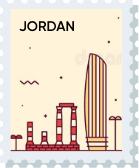MEAN vs MERN: Deciding Your Ideal Tech Stack

Quick Summary: The world of web development is growing and expanding at a rapid pace. It seems developers are constantly searching for the next big thing when it comes to web developmental projects. That’s why every developer needs to be aware of the technological stacks available when considering a potential project. The most common stacks open include MEAN, MERN, LEMP, etc. Each of these stacks has unique characteristics that make it better suited for specific project types.
What Do You Mean by Stack?
The list of technologies used to create a web application is known as a Stack. Although these terms have been widely used for the past many years, there is some confusion about what stack exactly means. So, let’s take a moment to understand what is meant by the term ‘stack’. A ‘stack’ refers to the collection of technologies used to create a web application. While developing web applications, you need to install and configure various technologies and frameworks one after another on your computer system. These sets of tools and technologies are then referred to as a stack. Some of the tools include programming languages, core frameworks, databases, etc.
The most popular technology stacks are the MEAN and MERN stacks. MEAN is a combination of the MongoDB database, JavaScript’s Node.js runtime environment, Express web application framework, AngularJS for the front end, and an Express server framework. The LAMP stack typically features Linux as the operating system, Apache as the web server, MySQL as the database, and PHP as the scripting language.
What is MEAN stack?
The MEAN stack is one of the most popular frameworks that web developers use to create full-stack apps. As you may be aware, each of the four technologies found in the MEAN stack is used for a specific purpose. MongoDB is at the base and stores data for applications and websites such as tracking sessions, blog comments, and product listings.
Express is a lightweight and flexible NodeJS web application framework.AngularJS is a client-side front-end web framework for creating highly dynamic single-page applications.
Node.js is a runtime environment that enables code to be written server-side in JavaScript—a programming language. In such an environment, code can run across multiple platforms, much like Java or C++.
What is the MERN stack?
The MERN stack is a framework used to create modern full-stack applications using a distinct combination of technologies. The name MERN actually stands for MongoDB, Express, React, and Node. In this article, we will try to understand what the technology combinations MERN stack is about and how it can help in developing modern applications.
React.js has made its way through the JavaScript community and has gained quite some popularity. With a focus on the virtual DOM, React allows us to build user interfaces that can then be rendered into the page without getting lost in the JavaScript spaghetti that Angular is known for. This approach resulted in a predictable framework that has a lot of potential.
React is one of the most popular JavaScript libraries ever developed. It can be used for building both browser and mobile applications.
Difference Between MEAN and MERN Stack
The MEAN Stack and the MERN Stack are both popular choices for developing modern web applications, each leveraging a set of technologies to streamline the development process. The main difference between the two lies in the choice of the database technology used.
Learning Curve: MEAN stack is a full-stack JavaScript-based web programming framework created by Valeri Karpov. It is positioned as an alternative to other modern full-stack JavaScript frameworks such as ReactJS, MERN, and Sails.js. MEAN combines MongoDB, Express, AngularJS, and NodeJS to develop both the frontend and backend systems of a website or application. The stack originally began as an API layer built on top of NodeJS with MongoDB serving as the NoSQL database and AngularJS functioning as its front-end framework for creating single-page dynamic web apps. Later on, the entire stack was renamed to MERN (MongoDB Express Node). This was due to the addition of Redux (a feature for state management) and React (a feature for creating reusable UI components) into the stack.
Architecture: In the MEAN stack architecture, MongoDB serves as the NoSQL database for storing and retrieving data, while Express.js acts as the back-end framework, providing routing, middleware, and server-side logic. Angular, a robust front-end framework developed by Google, handles the presentation layer and user interface, allowing developers to build dynamic single-page applications. Node.js, a server-side JavaScript runtime, supports the entire stack by enabling real-time communication and handling server-side operations.
The MERN stack architecture shares the same foundational components as MEAN, with the primary difference lying in the front-end technology. MongoDB remains the database choice, and Express.js continues to manage server-side operations and routing. However, React, a popular front-end JavaScript library developed by Facebook, replaces Angular in the MERN stack. React focuses on creating reusable UI components and efficiently updating the user interface in response to changes.
Productivity: The MERN stack, with React as its front-end library, is known for its component-based architecture, which fosters reusability and modular development. React’s virtual DOM and declarative syntax streamline the UI creation process, enabling developers to efficiently build interactive and responsive interfaces. Additionally, the vast React ecosystem provides a wide range of pre-built components and libraries that can accelerate development further. The flexibility of React allows developers to focus on creating a smooth user experience without becoming overly entangled in complex code structures.
On the other hand, the MEAN stack’s utilization of Angular brings its own productivity benefits. Angular is a comprehensive front-end framework that provides a set of tools for developing complex single-page applications. Its opinionated approach can expedite development by offering solutions to common challenges out of the box. Angular’s powerful data-binding and dependency injection mechanisms contribute to a structured development process, making it easier to manage larger projects with multiple developers. However, the learning curve associated with Angular might impact initial productivity, especially for developers new to the framework.
Third-Party Support: For the MEAN stack, Angular, a robust front-end framework developed by Google, provides a comprehensive ecosystem of resources. The Angular community is known for its extensive documentation, tutorials, and rich collection of third-party libraries and components available through the Angular Package Manager (npm). This level of support facilitates efficient development and helps developers address challenges quickly.
On the other hand, the MERN stack leverages React, a highly popular and widely adopted JavaScript library for building user interfaces. React’s ecosystem is equally vibrant, offering a plethora of open-source components and libraries through npm. React’s modular approach and the virtual DOM contribute to a highly performant user interface. The React community actively contributes to its growth, continually updating and refining its resources.
Security: In the MERN stack, security practices are centered around MongoDB’s role as the database. Developers need to implement proper authentication, authorization, and validation mechanisms to prevent unauthorized access to the database. This includes setting up user roles, ensuring data encryption during transmission, and implementing secure APIs using Express.js. React, the front-end library doesn’t inherently influence back-end security but should be used cautiously to prevent client-side vulnerabilities like Cross-Site Scripting (XSS). Node.js, which powers the back end, should be configured securely with appropriate access controls and the use of well-established security libraries to prevent common exploits.
Similar security considerations apply to the MEAN stack as well. MongoDB’s security features should be properly utilized to control access and protect data from unauthorized users. Express.js, the backend framework, requires setting up secure routes, handling authentication through strategies like JWT (JSON Web Tokens), and validating user inputs to prevent injection attacks. Angular, the front-end framework, offers strong protection against XSS by default, as it automatically sanitizes data. However, developers should still be cautious with user inputs and follow best practices. Node.js security, as with MERN, involves implementing proper access controls, securing APIs, and regularly updating packages to mitigate known vulnerabilities.
Conclusion
Both MEAN stacks vs MERN stacks have their own set of advantages and disadvantages compared to each other. While the MEAN stack is an amalgamation of the most beneficial technologies available in the market, the MERN stack establishes itself as a more lightweight combination of technologies. This section shall elaborate on how these two different stacks compare with each other in terms of their structure, complexity, maintenance, and development.
The MEAN and the MERN stacks both have a lot of popular technologies for building web applications. They help developers to create large-scale applications by offering that shortens the time required to build new features. Both show high levels of flexibility, scalability, and performance depending on the use case.
If you are looking to build an application in the fastest-growing stack of technologies, you should seriously consider our MEAN stack development services. Brain Inventory has years of experience in building high-performing applications gives us an edge over other companies when it comes to offering you the best possible advice and services for developing applications using the MEAN stack. MERN or Mean Stack is a modern JavaScript-based open-source framework that allows developers and businesses to build high-quality web, and mobile applications faster than ever before using a single codebase.

Have an idea?
Get in touch, we’d be
happy to hear from you
We are always looking out for new collaborations, whether you are a client who is passionate about a project or a talent who is interested in joining our team, our doors are always open.
locate us

India (HQ)
618, Shekhar Central, Palasia Square, A.B Road, Indore, Madhya Pradesh, 452001
+918109561401

United Kingdom
Brain Inventory, SBVS, 8 Roundhay Road, Leeds, UK, LS7 1AB
+18008209286

Canada
44 Main Street East Milton, ONCanada L9T 1N3
+4166696505

Jordan
185 Wasfi Al-Tal Street, Ammon Oasis Complex P.O Box 4724 Amman 11953 Jordan
+960770781000

USA
720 Seneca St Ste 107 Seattle, USA 98101
+1(206)6533419
if it's digital,we'll make it.
- Numetric - Online Accounting Software similar to QuickBooks
- Bloomia - Kegel exercise
- Virifi - Blockchain Powered Document Certification & Signing Platform
- Revolution Travel CRM - Custom CRM Built for Travel Agents
- Fatoura - Online Invoicing Platform
- My Fit Mantra - Your health partner
- Ocureel - Relation Building and video sharing Application